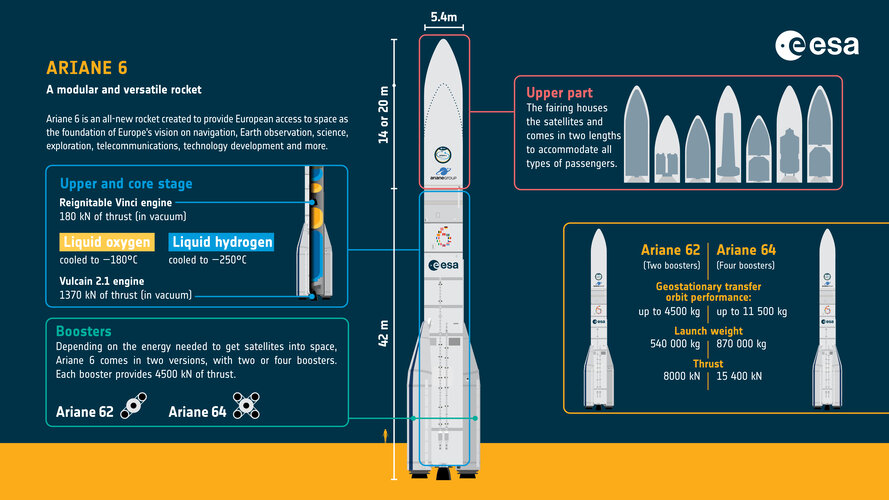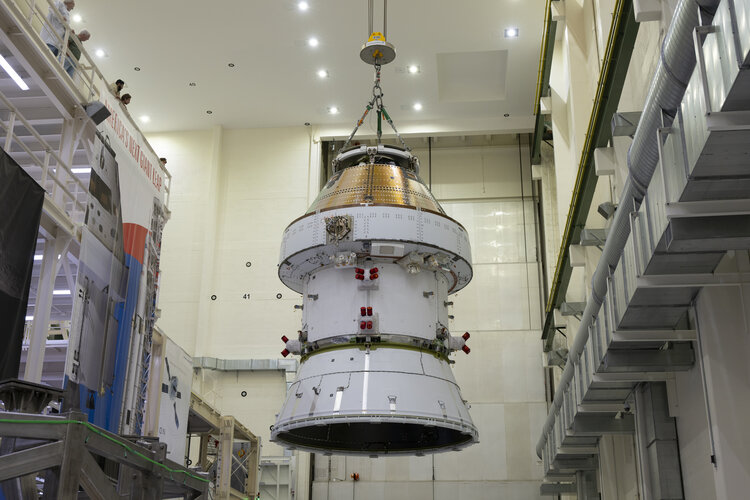Livermore Lab to provide optical payload for U.S. Space Force mission
Thursday, 09 May 2024 20:18

Space Economics 101: Why the Math on Refueling Just Doesn’t Add Up
Thursday, 09 May 2024 19:00

Starlink soars: SpaceX’s satellite internet surprises analysts with $6.6 billion revenue projection
Thursday, 09 May 2024 18:17

AI in Earth observation: a force for good
Thursday, 09 May 2024 08:50
The upcoming launch of the Φsat-2 mission is a prime example of the pioneering work that ESA does in the field of AI in Earth observation.
But when it comes to AI, hopes and fears abound in equal measure. In this interview, ESA’s Rochelle Schneider sets the record straight on how this transformational technology is improving access to crucial information on the state and future of our planet.
Ariane 6 infographic: at a glance
Thursday, 09 May 2024 08:49 Image:
Ariane 6 infographic: at a glance
Image:
Ariane 6 infographic: at a glance China launches its first medium Earth orbit broadband satellites
Thursday, 09 May 2024 08:15
Congressional letter seeks big increase in NASA science budget
Thursday, 09 May 2024 02:12

Virgin Galactic plans higher mothership flight rate with next-generation spaceplanes
Wednesday, 08 May 2024 22:43

National Space Council will explore military space and intelligence roles and responsibilities
Wednesday, 08 May 2024 20:27

SpaceX blasts off on 35th Space Coast launch of the year
Wednesday, 08 May 2024 20:12
SpaceX keeps lining them up and knocking them out with an afternoon launch from Kennedy Space Center on Wednesday.
A Falcon 9 rocket carrying another 23 of the company's Starlink internet satellites lifted off at 2:42 p.m. Eastern time from KSC's Launch Pad 39-A.
It's the second launch this week after a Starlink launch midday Monday from nearby Cape Canaveral Space Force Station.
It marks the third launch of the first-stage booster, which previously flew on the Crew-8 human spaceflight and one Starlink mission. It managed another recovery landing downrange in the Atlantic Ocean on the droneship A Shortfall of Gravitas.
This marks the 35th launch from the Space Coast with all but two coming from SpaceX.
United Launch Alliance had the other two launches and is awaiting its third with the Crew Flight Test mission to send up astronauts on board Boeing's CST-100 Starliner atop an Atlas V. Teams scrubbed that launch attempt on Monday night because of a valve issue on the Atlas V's upper Centaur stage.
Teams decided to roll the Atlas V back to ULA's Vertical Integration Facility to replace the valve and now that launch is targeting no earlier than May 17.
'Lost' spy satellite orbited Earth undetected for 25 years—until now, scientists say
Wednesday, 08 May 2024 19:50
An experimental spy satellite that was deemed "lost" after eluding detection for decades has finally been found. "The S73-7 satellite has been rediscovered after being untracked for 25 years," astrophysicist Jonathan McDowell said in an April 29 post on X, formerly Twitter. He says it reappeared on April 25, citing Space Force data.
The Cold War-era satellite, officially called the Infra-Red Calibration Balloon (S73-7), was just over 2 feet in diameter. The U.S. Air Force's Space Test program launched it on April 10, 1974, with a much larger spy satellite, Gizmodo reported.
According to the outlet, the balloon was supposed to inflate after launch, but something went wrong. After the failure, teams back home lost track of the balloon twice—once in the 1970s and then again for much longer starting in the 1990s when ground-based sensors could no longer detect it.
For a quarter-century, analysts in the 18th Space Defense Squadron, the group responsible for tracking all human-made objects in Earth's orbit, saw nothing of S73-7, Popular Science reported. In the minds of experts, the balloon was now lost in the world of "space junk.







 Image:
Apollo to Artemis
Image:
Apollo to Artemis